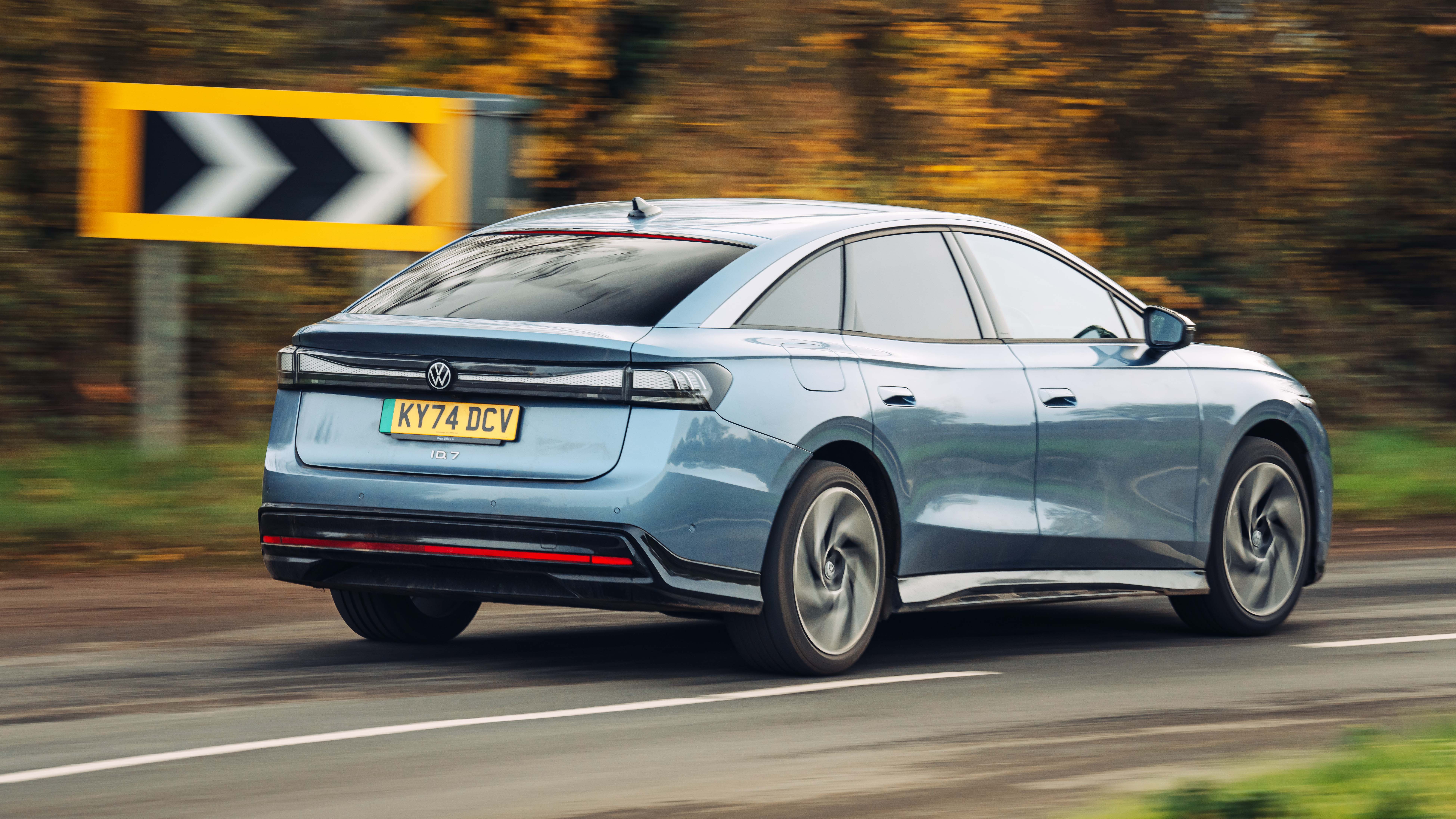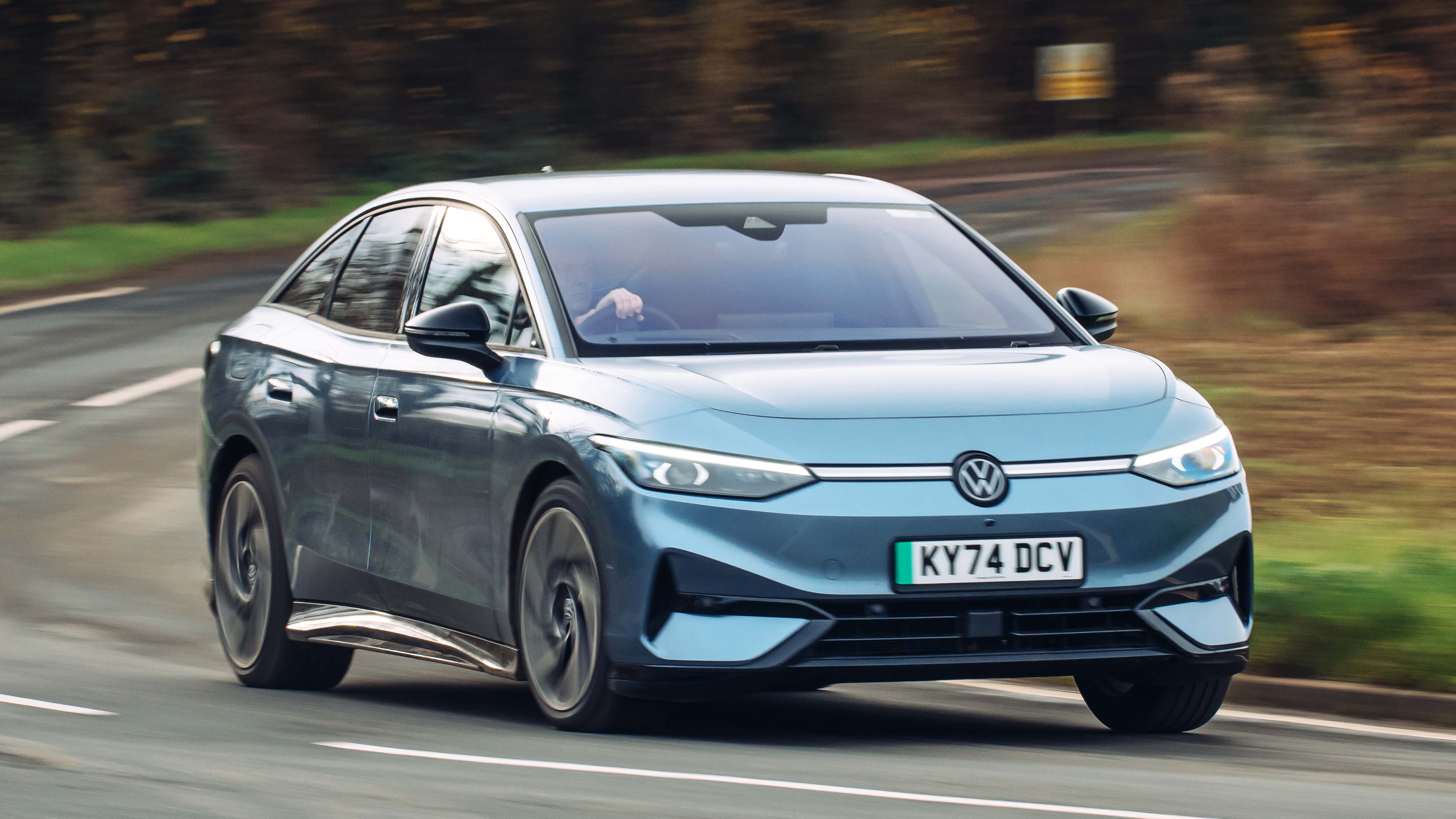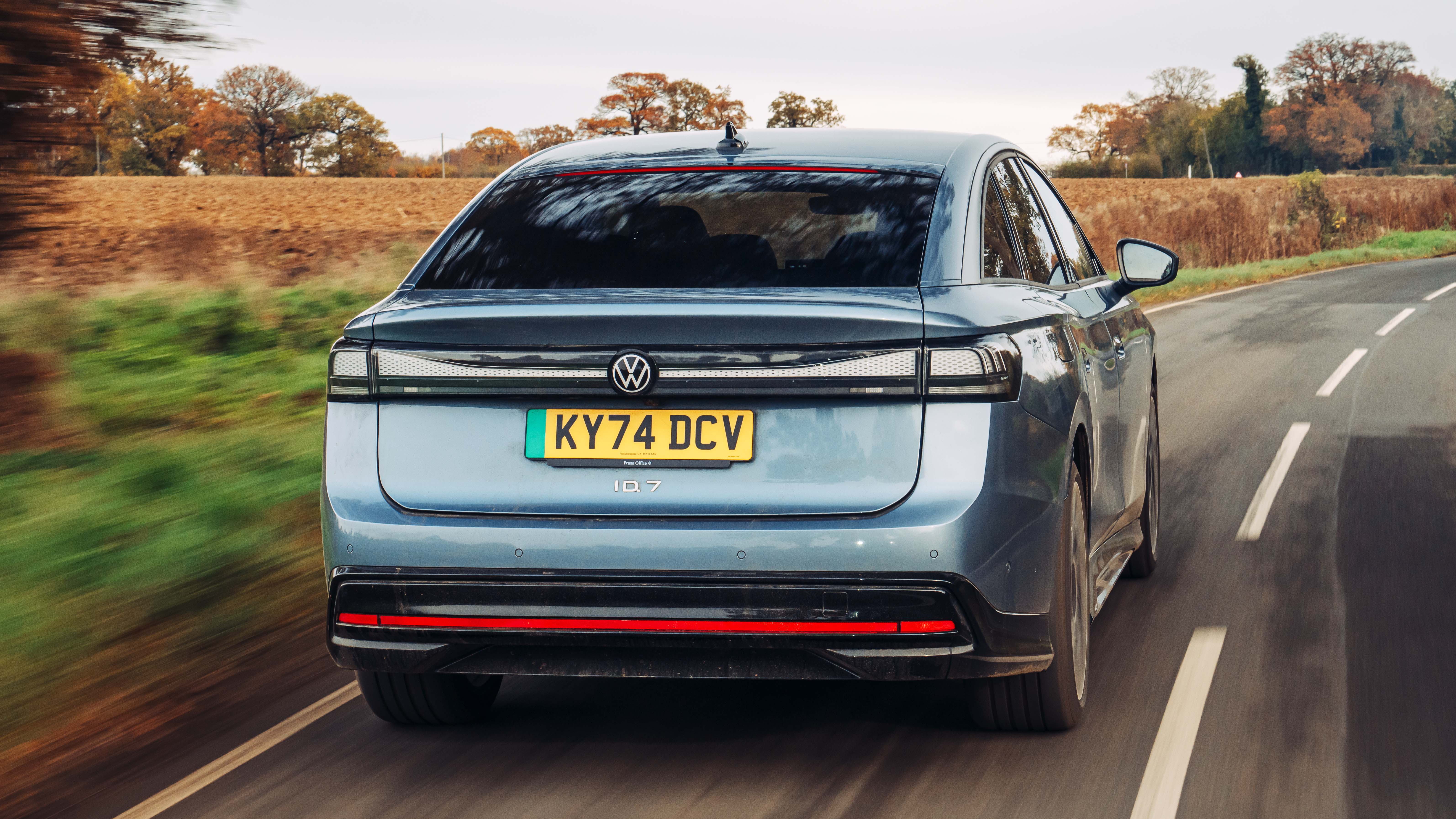
SPEC HIGHLIGHTS
- SPEC
Volkswagen ID.7
- Range
383 miles
- ENGINE
1cc
- BHP
281.6bhp
- 0-62
6.5s
Life with a VW ID.7: here's the harsh reality of running an EV in winter
Cold outside, huh. Allow this to set the context for a grouchier than usual update on life with the ID.7. Well, it had to happen.
Firstly, why do lithium-ion batteries struggle in cold weather? It’s because the electrolyte fluid they use becomes thicker when the exterior temperature is sub-optimal, slowing the electrochemical process and increasing the battery’s resistance. The lithium ions basically have more trouble moving between the cathode and the anode.
With the mercury hovering little higher than 0°C, it’s certainly taken a toll on the regular ID.7’s range and efficiency. VW claims 383 miles fully charged WLTP, although the best I’ve seen since the car arrived was 320. It’s been steadily dropping since then and after a full overnight charge the range is currently… 243 miles. That, ladies and gentlemen, is the reality of running an electric car in a cold climate.
What to do? Turn my garage – currently full of drum kit and other stuff – back into a garage. But it would still be freezing. A heat pump is a £1,050 option on VW’s ID cars, an efficiency-enhancing item that harvests heat from the battery and elsewhere and should be standard on the range-topping ID.7. Our car doesn’t have one, so we’re relying on the regular air conditioning system to do the heavy lifting and demisting. On a cold day when you’re acutely aware of how much energy you’re munching through, its needs suddenly feel quasi-vampiric.
This also leads us into the depths of the ID’s once-reviled user-interface, a victim of VW’s head-long rush into the post-dieselgate new electric era. It’s now much improved. Those notorious cold/hot and volume sliders at the edge of the central screen are now illuminated, and the smartphone mirroring is as swift as any system out there (bar the occasional wobble). I tend to leave it in Apple CarPlay most of the time, but flicking to the radio network and back is a cinch. Eliminating the lane assist and speed limit warning is now also mercifully easy.
But the climate control? Less so. In fact, our beloved decade-old family Renault Twingo is more intuitive, with its simple rotary buttons and instructions. The ID.7’s set-up is graphically clever but overthinks everything, turning the act of choosing where the air is distributed into a game of Russian Roulette. To be fair, there is a ‘smart’ setup which calls up seven blue tiles, each assigned a different function including ‘warm my feet’, ‘warm my hands’, or ‘fresh air’. That last one is handy when a mystery vent somewhere within insists on billowing a cloud of hot air towards your face even if the temperature setting is at a reasonable 20°C. There is a pre-conditioning function, which triggers the air con and – very welcome – heated steering wheel in advance of me leaving the house.
There are a few other gremlins. I need to have a fiddle with the wipers, which are currently making a very unappealing lo-fi noise. And the locking system seemingly has a mind of its own, often failing to recognise the key as we approach the car, and then refusing to lock when we park up and leave. It’s 50/50 whether it’s going to require the time-honoured IT Crowd cure-all ‘have you tried turning it off and on again?”
Featured







